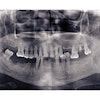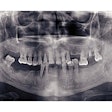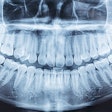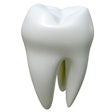A systematic review conducted by researchers from the University of Washington School of Dentistry found no significant difference in pain reduction between the use of stabilization splint therapy and other active interventions in the treatment of temporomandibular myofascial pain (Journal of the American Dental Association, Dec. 2009, Vol. 140, pp. 1524-1525).
The inclusion criteria for the review were randomized controlled trials (RCTs), participants with myofascial pain symptoms, and the use of a stabilization splint compared with any other form of active temporomandibular disorder (TMD) treatment.
The authors looked at the findings of 12 RCTs from 1966 to June 2001 that compared the use of a stabilization splint for patients who had a diagnosis of myofascial pain with one of the following control therapies: acupuncture, bite plates, biofeedback, visual feedback, nonoccluding splints, relaxation, jaw exercises, or no treatment.
"Although stabilization splint therapy was better than no treatment, there was no statistically significant difference in pain reduction between the use of stabilization splint therapy and any of the control therapies," the authors concluded.


















